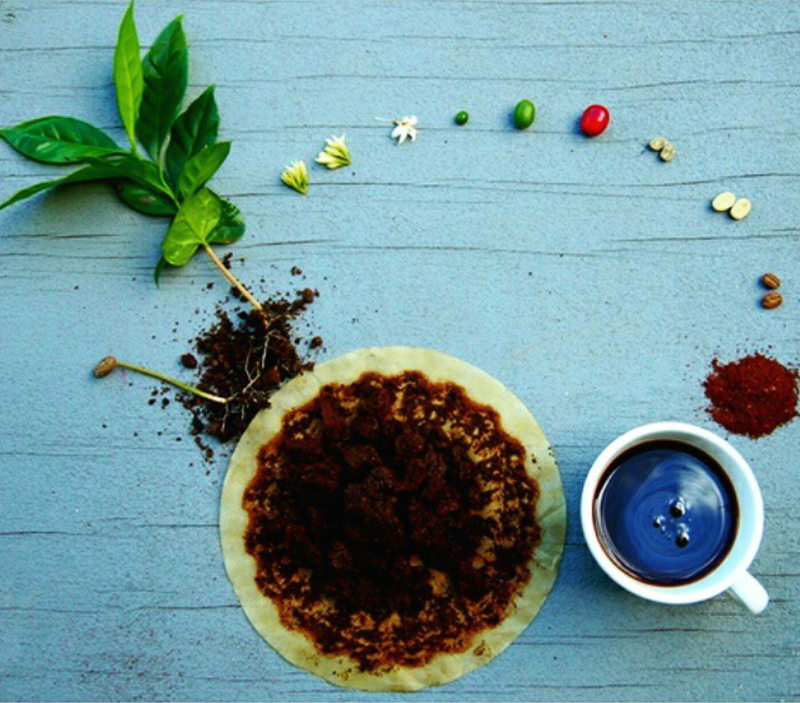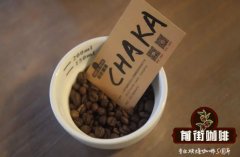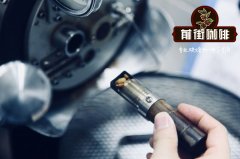Can't you tell the difference between bean planting and tree planting? Stop ordering a cup of Arabica coffee!
Professional coffee knowledge exchange more coffee bean information please follow the coffee workshop (Wechat official account cafe_style)
Guests often go to the coffee shop to order Arabica coffee. As for what Arabica is, some people say it is a brand, others say it is a variety, but it is impossible to explain what a variety means. There are also people who want to roast coffee shallowly. These words should be said by the coffee seller, otherwise the guests would not order coffee in this way.
We all drink Arabica coffee.
The coffee we drink is Arabica beans, in addition to some coffee that does not have to pay extra after meals, there are commercial beans, maybe earbags, instant coffee, canned coffee will be mixed with Robbosa beans, as long as we go to coffee shops to drink coffee, it is rare to drink coffee that is not Arabica beans. Why? Let's watch it together.

I can't tell the difference between beans and trees.
As one of the three major drinks in the world, coffee has a long history. Regular coffee drinkers should be familiar with such terms as Arabica (Arabica), Robusta (Robusta) and Liberica (Liberia), but if you want to add Typica, Bourbon, SL-28, 34, Mocha, Maragogype, Catuai. With so many names, your head may be too loud to hear. Where did you get such a complicated thing? What are they? What does it have to do with each other? Is there a difference? How on earth should it be distinguished or classified? "
Arabica is a bean seed, in addition to Arabica, there are Robusta and Liberia. Beans are like yellow, white or black people, if Arabica is yellow, but because of differences in region, culture, diet, belief, system, social order, customs and customs, there are different ethnic groups in South Korea, Japan, Singapore, Malaysia, Indonesia, China, and so on. Although they belong to the same yellow race, they each have their own culture of origin, dietary habits and beliefs. The same goes for Arabica coffee beans.
[coffee beans] is just a general term. Of course, there are different kinds of coffee beans. So far, only three bean lines, Arabica (Arabica), Robusta (Robusta) and Liberica (Liberia), have been found, known as bean seeds. The explanations of these three kinds of beans are the same as those of yellow, white and black people, as well as red and brown people. Because of the differences in leaf shape, particle size, substance content, acid value, concentration, caffeine content, and altitude suitable for growth, there are various tree species such as Typica, Bounbon, Maragogype, Catuai, Pacamara and Geisha in Arabica beans.
The following is a detailed introduction of these three categories of beans.
Arabica Arabica beans: nearly 60% of the market share
The growing environment of Arabica beans is relatively harsh, and the ideal altitude for planting should be more than 1000 meters. Arabica beans planted below 1000 meters are more susceptible to disease or insect pests, and the output quality is not very good. Because there are many restrictions on the conditions suitable for growth, and it is not easy to plant, it needs special care when planting. Arabica beans grown in high altitude environment are relatively solid, and are not easy to burst at high temperature during baking. the quality of cooked beans is good, and the flavor is rich and layered. Although Arabica beans are not easy to grow, they still have a market share of nearly 60% (production has declined in recent years, with the latest figure being 60%).
Among the various kinds of Arabica beans, Typica and Bounbon are the two most distinctive and famous varieties. Bounbon is a new variety mutated by Typica. In the 18th century, Typica trees were transplanted to Reunion in the Indian Ocean by the French, at a time when Reunion was also known as Island Bounbon. In order to adapt to the new environment, the transplanted Typica variety naturally mutates into a new variant variety of Bourbon Island variety, so it is called Bounbon variety. There is no doubt that Typica Irontruck and Bounbon bourbon have been identified as the original species of almost all natural and artificial variants.
From these two kinds of coffee beans, thousands of other beans have been derived, such as Kent, Mocha, Blue Mountain, Caturra and Brazilian hybrid Mondo Nuevo. It is impossible to estimate exactly how many new varieties in the world have been extended by natural variation, or artificial mating, mutation, cuttage, mixing, and so on, but what is certain is that these tree species are all new varieties cultivated by the Arabica bean line and bred in the early and later stages.
Robusta Robusta beans: market share is about 40%.
The original Robusta coffee is called Canephora. Canephora is the Latin name for Robusta Coffee, which was later called Robusta coffea based on business practices. Robusta and Arabica are very different kinds of beans. Robusta does not need to be planted at high altitude, but can grow at an altitude of more than 200m. It is not only not afraid of moisture and strong disease resistance, so it can be far away from the erosion of diseases and insect pests, and its advantage is large output value. Although Robusta beans have a large output value, the flavor is not as rich, hierarchical and varied as Arabica beans, so its importance is almost located in blending, commonly used in Italian coffee and in the production of instant coffee. Therefore, its market share is about 40%.
Of course, there are mutated and improved new varieties of Robusta beans, but the varieties that can show flavor and characteristics are very rare, and Robusta taste is strong and bitter, theophylline content is high, lack of fineness, thick taste, as a single product coffee, the taste is less pleasant, so there is no one to study its variety content and characteristics, as well as to explore the differences among tree species. Therefore, it has always been called Robusta, not to classify or write about its variety and quality. In fact, Robusta coffee from Indonesia's Java and Papua New Guinea (Papua New Guinea) countries in Oceania is of very good quality. The most common Robusta variants are Conilon in Brazil and Java-Lneac, Nana, Kouilou and Congensis.
Liberica bean seed: only about 1% share
Liberica is large in shape and similar to Robusta in appearance and performance, but it is not easy to peel, has strong acidity and strong irritating taste, and its taste is worse than that of Robusta. Due to the lack of cultivation, the output share is only about 1% of the total output value of coffee beans, so there are few records and figures in the coffee market.
New beans that are constantly improving
Arabica bean is elegant, but its disease resistance is low. In order to increase output value and improve disease defense, many coffee plantations always try to improve the gene of Arabica bean by mating, grafting and mixing, in order to improve plant disease resistance and heat tolerance, and to increase the output value of new varieties.
This kind of thinking may be able to achieve the purpose of improvement, but from another point of view, it may also be trapped in the embarrassing situation of the improved new breed.
Is it Arabica or Robusta the new tree species that have been successfully mated with Robusta? Because some improved new varieties are difficult to judge by their appearance, new varieties improved with Robusta gene often have to be identified by scientific instruments in order to determine which kind of bean they belong to.
After mating with Arabica beans, should the improved varieties be regarded as the improvement and success of Robusta beans, or should Arabica beans be put under the stigma of depravity, obliterating the elegance and beauty of Arabica beans, or even the chaos in the Chu-he-Han world?
At present, new hybrid varieties of coffee are being cultivated all over the world. In many successful cases, we can see that the result of efforts is to increase the output value, or to add bright fragrance to the large beans with weak taste, or even to make the beans have a more consistent size and better flavor. It also has stronger drought resistance and disease resistance, as well as adaptability to specific soil quality, or changes in caffeine content, and so on. But should this be said to be a technological breakthrough in the coffee industry, or to cater to consumers' likes and dislikes of the old, or the product of the industry's interests, I am afraid the conclusion is still a matter of opinion!
How should I order coffee?
Guests often go to the coffee shop to order Arabica coffee. As for what Arabica is, some people say it is a brand, others say it is a variety, but it is impossible to explain what a variety means.
If you are explained by logical concepts, if someone asks you where you are from? Answer the name of the place where you are from: Beijing, Shanghai, Guangdong. No one will say he is yellow when asked about his place of birth. This is the point of this article. Almost all of the coffee we drink is Arabica beans, especially in coffee stores and specialty coffee shops. Even if there are beans with Robusta in ordinary commercial beans, we don't call them "give me a cup of Arabica coffee" when we drink coffee. This is the same as saying that I am a yellow man. You can tell it is a coffee layman.
Asking for a cup of coffee can be in the name of a country, such as Ethiopia, Kenya, Indonesia, Colombia, Brazil, Guatemala, Costa Rica. Or Blue Mountain, Antigua, Kona, Harrar, Yirgacheffe, La Minita, La Esmeralda, Jampit, Toraja in the name of producing area or manor. The method of selection is also correct. Otherwise, with more distinctive tree species, such as: Pacamara, Geisha, Maragogype … Otherwise, different methods of sun treatment (Dry Processed), water washing treatment (Wet Processed), honey treatment (Honey Processed). That's fine. In short, don't just say "give me a cup of Arabica coffee".
After the above explanation, we should also understand that beans are different from tree species, so don't be foolish and ask for a cup of Arabica coffee.
END
Important Notice :
前街咖啡 FrontStreet Coffee has moved to new addredd:
FrontStreet Coffee Address: 315,Donghua East Road,GuangZhou
Tel:020 38364473
- Prev

How to use a pressure pot to make a cup of iced coffee? How do I use the French kettle?
Professional coffee knowledge exchange more coffee bean information please follow the coffee workshop (Wechat official account cafe_style) before the editor shared with you how to use Philharmonic pressure to make iced coffee (links can be poked to use Philharmonic pressure to make a cup of iced coffee? The editor wants to know what it would be like to use a pressure pot to make iced coffee. | | introduction of beans | because the kettle is soaked and extracted |
- Next

Is the smart filter cup easy to use? Can smart filter cups be used as ordinary filter cups?
Professional coffee knowledge exchange more coffee bean information please follow the coffee workshop (Wechat official account cafe_style) extraction mode to soak in fact, water accounts for more than 98% of each drop of coffee. The American Fine Coffee Association used to quantify the concentration of total dissolved solids (TDS, total dissolved solids) measured by an optical refractometer. If in a cup of coffee
Related
- What is the Philharmonic pressure? How to use Philharmonic pressure to make delicious coffee
- Why does a hand grinder have more fine powder than an electric grinder?
- In addition to the hot mom, what is the difference between the versions of EK43 | ditting and Mahdi ek43?
- What kind of equipment do you need to make coffee by hand? Introduction to novice starter cooking equipment tools
- Espresso needs to be ground how thick and thin scale entry Italian Coffee Machine Bean Grinder investigation and Grinding course
- How much does it cost to open a small private cafe? How much does it cost to learn coffee? How to operate it?
- The difference between the flavor characteristics of hand-brewed coffee and coffee maker is hand-brewed coffee really better than coffee maker? Can I use a coffee machine to make coffee beans by hand?
- The difference between 01 and 02 of hario v60 filter cup what is the difference between 01 and 02 filter cup opening and cooking flavor
- What's the difference between the smart cup and the French kettle? Which is better, the French kettle or the Smart Cup?
- What's the difference between a smart cup and a V60 filter cup? The difference between the taste of smart cup and hand-brewed coffee

